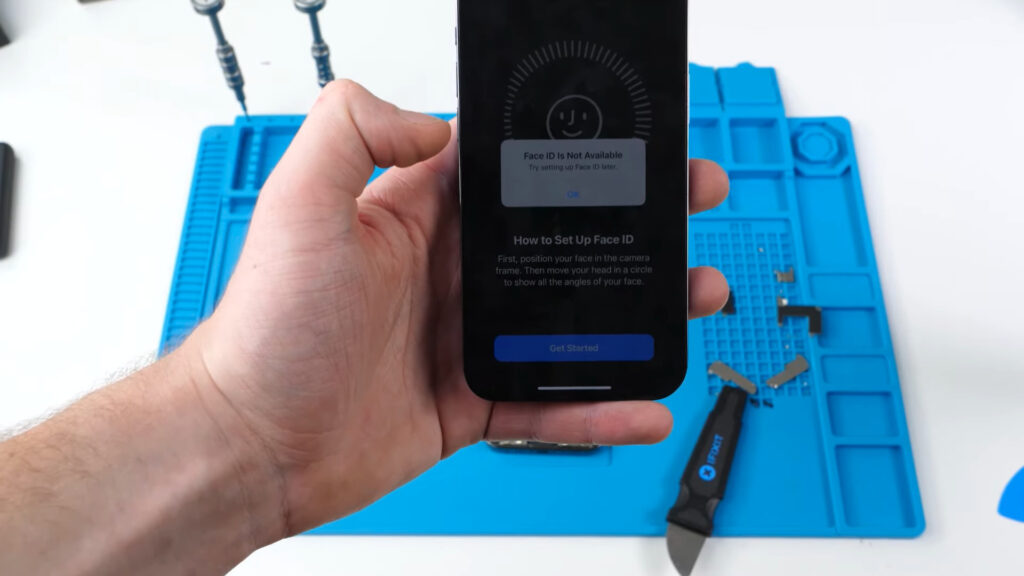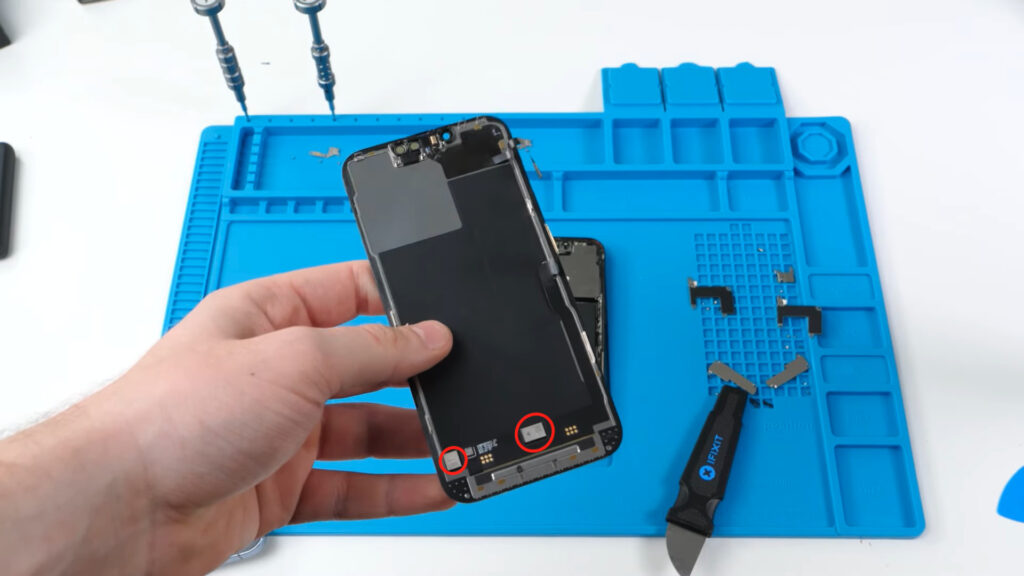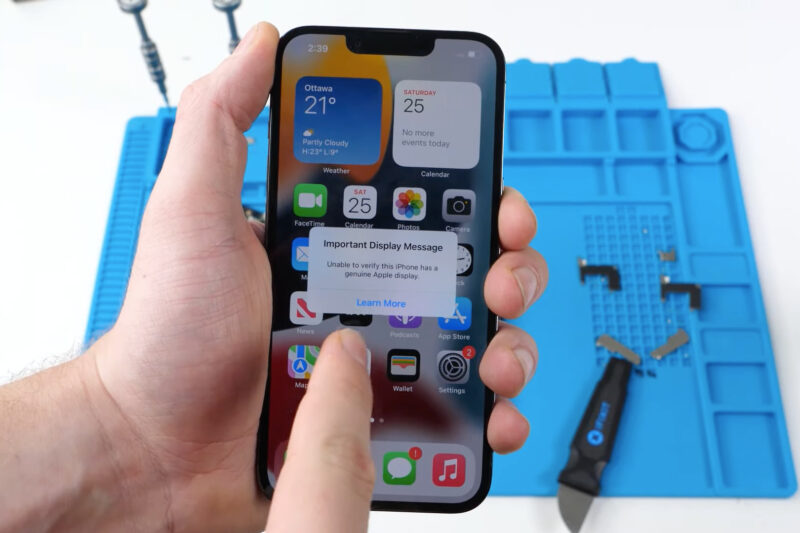Attempts to replace the screen on the new iPhone 13 have revealed that Apple is setting up more obstacles for third-party repairs on the company’s devices. When Youtube channel Phone Repair Guru tried to switch out the display of an iPhone 13 with a screen from another perfectly-working iPhone 13, it turns out that doing so will completely disable the Face ID support.
Oddly enough, replacing the actual Face ID module with all its sensors seems to be doable, since none of the biometric data is stored in the module itself. Phone Repair Guru says that doing this would usually lead to Face ID being disabled on older iPhone models.

However, when the phone detects that the display has been switched out instead, even with the original Face ID components, the facial unlock feature refuses to work and won’t even allow Face ID to be set up again after resetting.
What this means is that even with a genuine Apple display, it is nigh impossible for third-party repair shops to replace the display on the 13 series, and users will instead need to opt for more expensive Apple or Apple-authorised repair services. The video does note that it’s still possible to swap the display by also transferring a few specific chips from the original screen but says that most repair shops won’t do this because of its complexity.

Besides its products, Apple is renowned for making it insidiously difficult for consumers to repair their devices using cheaper alternatives, such as disabling touch functionality for iPhone 8 users with third-party displays. Earlier this month, Apple shareholders had filed a resolution to get the tech giant to reverse its “anti-repair practices”, simply because it’s not in line with Apple’s public stance to be an environmentally-friendly company. Germany wants the European Union to force manufacturers like Apple to offer spare parts at a reasonable price for up to seven years.
(Sources: Phone Repair Guru, AppleInsider)
Follow us on Instagram, Facebook, Twitter or Telegram for more updates and breaking news.



